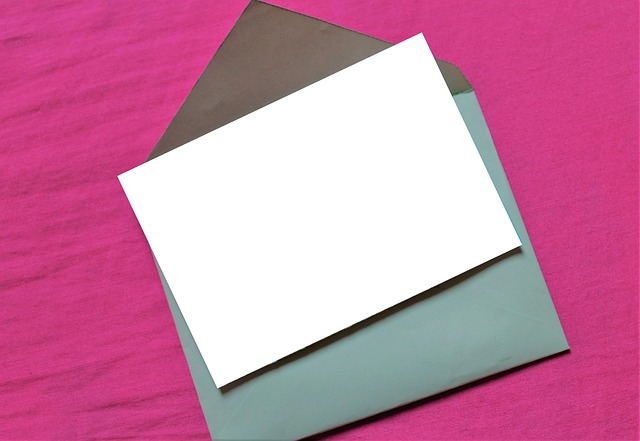Blog
Eid Invitation Cards: Celebrating Tradition with Style and Sentiment

Eid is a time of joy, togetherness, and gratitude. It marks the end of Ramadan (Eid-ul-Fitr) or the completion of Hajj (Eid-ul-Adha) and brings families, friends, and communities together in celebration. One of the most cherished traditions associated with Eid is inviting loved ones to join in the festivities—whether it’s for an Iftar dinner, a post-Eid prayer gathering, or a grand family feast. And what better way to extend this invitation than through beautifully designed Eid invitation cards?
In today’s digital age, where communication is often instant and virtual, the charm of sending or receiving an actual invitation card still holds a special place in our hearts. Eid invitation cards are more than just a piece of paper or an image on a screen—they are an expression of warmth, respect, and love.
Why Eid Invitation Cards Matter
Eid is not just a religious event; it’s a cultural celebration. It’s about spreading happiness, sharing blessings, and strengthening bonds. Sending an invitation card for Eid gatherings reflects good manners, hospitality, and attention to detail. It makes your guests feel valued and anticipated.
Whether you are planning a small home gathering or a large community celebration, an invitation sets the tone of your event. It gives guests a glimpse into the mood, theme, and purpose of the occasion.
A well-crafted Eid invitation card reflects your personality, your culture, and the respect you have for your guests. It also helps communicate important details like the date, time, venue, and dress code in an organized and visually appealing manner.
Types of Eid Invitation Cards
1. Traditional Cards
These often feature classic Islamic motifs such as crescent moons, stars, lanterns, mosques, and Arabic calligraphy. Gold, silver, green, and royal blue are popular color choices. Traditional cards evoke a sense of cultural richness and religious reverence.
2. Modern and Minimalist Cards
For those who prefer a more contemporary style, minimalist Eid cards use clean fonts, soft pastel colors, and simple geometric or floral designs. They appeal to a younger generation looking for elegance and simplicity.
3. Digital Eid Cards
As technology advances, e-cards and digital invitations are becoming increasingly popular. They are easy to send via WhatsApp, email, or social media, making them ideal for long-distance friends and relatives. Some even include animations, background music, or interactive elements.
4. Personalized Cards
Customizing your invitation with the name of the guest or a personal message adds a thoughtful touch. Some people also include family photos, quotes from the Quran, or their own Eid wishes to make the card unique.
Elements of a Good Eid Invitation Card
When designing or selecting an Eid invitation card, consider the following key elements:
- Greeting: A traditional Eid greeting like “Eid Mubarak” or “Blessed Eid Wishes” sets the tone.
- Host’s Name: Clearly mention who is hosting the event.
- Event Details: Include the date, time, venue, and RSVP information.
- Theme or Dress Code: If your event has a particular theme or attire suggestion, mention it.
- Visual Appeal: Use colors and design elements that are festive but not overwhelming.
- Message: A warm and heartfelt message makes the card more inviting. A line like “We would be honored by your presence as we celebrate Eid together” adds a personal touch.
Creating Eid Invitation Cards
DIY Cards:
Handmade cards are perfect for those who enjoy crafts. Using cardstock, glitter, calligraphy pens, and stickers, you can create beautiful and heartfelt cards at home. This is also a great activity for children to participate in.
Online Design Tools:
Platforms like Canva, Adobe Express, and even mobile apps offer customizable Eid card templates. These tools allow you to design professional-looking invitations without any graphic design experience.
Professional Services:
For grand events like weddings, community feasts, or corporate Eid parties, consider hiring a designer or printing service. This ensures high-quality material and a consistent theme across all event elements.
When to Send Eid Invitations
Timing is important. Try to send your invitations at least 7–10 days before the event. During Ramadan, people are busy with worship, so early notice helps them plan accordingly. For Eid-ul-Adha, especially if guests may be traveling, a two-week advance notice is recommended.
Digital invitations can be sent closer to the date, but even then, giving your guests some time to prepare is courteous.
Final Thoughts
Eid is a celebration of love, unity, and gratitude. In a world that often feels rushed and disconnected, taking the time to create and send an Eid invitation card can rekindle the joy of personal connection. Whether it’s a handcrafted card full of glitter or a sleek digital invite, the sentiment behind the gesture is what truly counts.
So, this Eid, go beyond a simple text message or social media post. Send a beautiful invitation card that reflects your style and hospitality. Let it serve as a warm reminder that your loved ones are not only invited—but eagerly awaited.
Eid Mubarak in advance—and may your gatherings be filled with laughter, blessings, and cherished memories.
